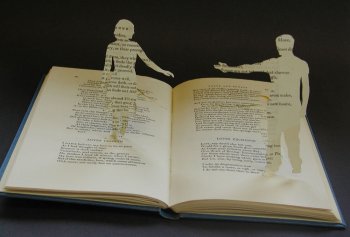
Suggested Reading:
Type, Colour and Graphic Design
- Barnard, Malcolm (2005)
Graphic Design as Communication. London: Routledge
- Batchelor, David (2000)
Chromophobia. London: Reaktion
- Beaumont, Michael (1987)
Type & Colour. London: Phaidon (not explicitly semiotic but useful)
- Bernard, Michael, Melissa Mills, Michelle Peterson, & Kelsey Storrer (nd)
'A Comparison of Popular Online Fonts: Which is Best and When?'
[WWW document] URL
http://psychology.wichita.edu/surl/usabilitynews/3S/font.htm (not explicitly semiotic but useful)
- Brumberger, Eva R (2003) 'The Rhetoric of Typography: The Awareness and Impact of Typeface Appropriateness',
Technical Communication 50(2): 224-231 (not explicitly semiotic but useful)
- Carter, Rob, Ben Day & Philip Meggs (2002)
Typographic Design: Form and Communication (3rd Edn).
New York: John Wiley (not explicitly semiotic but useful)
- Chandler, Daniel and Rod Munday (2011)
Dictionary of Media and Communication. Oxford: Oxford University Press
- Davis, R C & Hansel J Smith (1933): 'Determinants of Feeling Tone in Type Faces',
Journal of Applied Psychology 17: 742-764 (not explicitly semiotic but useful)
- Frere-Jones, Tobias (2000): ‘Drugstore Travelogue’. In
Steven Heller (Ed)
Sex Appeal: The Art of Allure in Graphic and Advertising Design. New York: Allworth Press, pp. 40-42 (not explicitly semiotic but useful)
- Hallock, Joe (2003): ‘Color Assignment’
http://www.joehallock.com/edu/COM498/index.html (not explicitly semiotic but useful)
- Haskins, J.B. & L. Flynne (1974): ‘Effects of headline typeface variation on reader interest’,
Journalism Quarterly 51(4), 677-682 [gendered fonts] (not explicitly semiotic but useful)
- Koller, Veronika (2008)
'Not Just a Colour: Pink as a Gender and Sexuality Marker in Visual Communication',
Visual Communication 7(4): 395-423
- Meggs, Philip (1992)
Type and Image: The Language of Graphic Design. New York: John Wiley (not explicitly semiotic but useful)
- Moss, Gloria (2009)
Gender, Design and Marketing. Farnham: Gower.
- Paoletti, Jo B. (2012)
Pink and Blue: Telling the Boys from the Girls in America. Bloomington, IN: Indiana University Press
- Picariello, Martha L, Danna N Greenberg & David R Pillemer (1990) ‘Children’s Sex-related Stereotyping of Colors’,
Child Development 61: 1453-1460 (not explicitly semiotic but useful)
- Robertson, Keith (1993)
'On White Space in Graphic Design'
[WWW document] URL
http://www.logoorange.com/white-space.php; originally published in Émigré 26
- Rowe, Camille L (1982) 'The Connotative Dimensions of Selected Display Typefaces',
Information Design Journal 3(1): 30-37 (not explicitly semiotic but useful)
- Sharpe, Deborah T (1975)
The Psychology of Color and Design. Totowa, NJ: Littlefield, Adams (not explicitly semiotic but useful)
- Taft, Charles (1997) ‘Color Meaning and Context: Comparisons of Semantic Ratings of Colors on Samples and Objects’,
Color Research and Application 22(1): 40-50 (not explicitly semiotic but useful)
- Vandergrift, Kay E et al. (nd): ‘How Does Gender Color our Preferences and Decisions on the WWW?’
http://www.scils.rutgers.edu/~kvander/gender_project/home.htm (not explicitly semiotic but useful)
- van Leeuwen, Theo (2010)
The Language of Colour: An Introduction. London: Routledge
- Will-Harris, Daniel (2003): ‘EsperoFonto Typeface Selection System’
http://www.esperfonto.com/ (not explicitly semiotic but useful)
Note: Treat with extreme caution sources labelled with this symbol!




